The Mossberg Patriot Predator is a budget friendly ($429.00 street price) bolt-action rifle that is designed for predator hunting, varmint control and medium sized game. The Patriot Predator we received from Mossberg is chambered in .243 Winchester, which has been extremely popular for decades, due to its accuracy, low recoil, and flat trajectory. We spent months with this rifle at the range and in the field while hunting. From Prairie Dogs in Wyoming, to Coyotes in Nevada and back to Idaho for Badgers, the rifle we had was put through a rigorous regimen of our varmint hunting escapades!
Mossberg Patriot Predator .243 Winchester Rifle Specifications:
Some key features of the Mossberg Patriot Predator rifle in .243 Winchester include:
- Barrel: The rifle features a 22-inch fluted barrel with a 1-10″ twist that is threaded for a suppressor or muzzle brake (5/8 x 24), with an 11 degree match crown.
- Stock: The rifle comes with a Flat Dark Earth (FDE) synthetic stock that is designed to be lightweight and durable.
- Trigger: The Patriot Predator features Mossberg’s patented LBA (Lightning Bolt Action) trigger, which is user-adjustable from 2 to 7 pounds. The trigger is designed to be crisp and clean, with no creep or overtravel.
- Magazine: The rifle comes with a detachable box magazine that holds four rounds. The magazine is designed to be easy to remove and insert, and is made from durable polymer.
- Scope Base: Picatinny rail for scope mounting.
- Weight: 6.5 lbs.
- Select models have Cerakote premium polymer ceramic coating on fluted bolt/handle, barrel/cap, providing superior abrasion and wear resistance, and added anti-corrosion protection.
“This Predator was born to hunt, with suppressor-ready threaded barrels; optics-ready picatinny rail, and built on the powerful and proven Patriot chassis. With a smooth user-adjustable trigger and oversized bolt handle, Predator rifles offer unmatched accuracy and dependability.” – Mossberg.com
We followed the steps we normally take to prepare a new factory rifle for use. We use these steps with ALL new factory rifles received. Please see this video for the steps we take: https://www.youtube.com/watch?v=YVVEFMZfzSo
Optic:
I mounted the Tract Optics TORIC UHD 4-20x50mm, 30mm tube, MOA riflescope, using the Iota Triad 30mm, Medium height, picatinny mount rings. The Tract Optics riflescopes have proved to perform extremely well at the range and in the field. Tract has a full line of optics that fall within a wide price range for an optic that is loaded with high-priced scope features. I have found them to be extremely clear, with perfect tracking and repeatability. If you haven’t already, I recommend taking a look at what they offer in their lines.
Range Report:
Our range testing was done with four different brands and bullet weights, with our focus being on the Sierra Prairie Enemy Ammunition, loaded with the .243 – 70 grain SBK projectile, which we planned to hunt with over the fall and winter varmint/predator “seasons”. Although some of the ammunition we used for our accuracy testing is not considered “varmint ammunition”, it was still important to shoot the most popular factory ammunition/bullet weight available, the 100 grain projectile. We also dipped down to the 55 grain Nosler Varmageddon ammo, which showed decent results, but not something we would focus on for varmint hunting at longer ranges. All groups were shot at 100 yards, off bags. The groups were 3-shots each, with a cold bore shot, followed by two more immediate shots (no cooling in-between shots), which is our hunting test procedure. We do shoot larger groups when doing load development.
Hornady 100 Grain American Whitetail Ammunition:
Federal 100 Grain Power-Shok Ammunition:
Sierra 70 Grain Blitzking Prairie Enemy Ammunition:
Nosler 55 Grain FB Tipped Varmageddon Ammunition:
While participating in our annual “Calf Killers” Coyote hunt in Nevada, I pulled the Mossberg Patriot Predator out and had an impromptu range test with myself and two other main writer/editors (David Hillis and Cache Carlson). From a bench, we each shot 3 rounds at a target 100 yards away, using the Sierra 70 Grain BK Prairie Enemy ammunition. There was no practice and the bench they shot on was just a picnic bench with a sand bag. I chose to shoot from the hood of my 4Runner, where I do most of my accuracy testing. It is comfortable, I can stand and I find lining up the firearm/optic with the target in the bags much easier, with little manipulation. The shots were taken in succession, with David shooting first, then Cache, then myself. Cool down consisted of the time it took the next shooter to settle in for their shots. Here are our results:
As you can see, David’s group measured 0.66″, or 0.63 MOA. Cache shot a 0.99″, or 0.95 MOA group. I shot last, with the rifle very warm, a 0.47″ group, or 0.45 MOA group. This little shooting test showed the capability of this Patriot Predator. All of us were very impressed with the results, for a rifle that cost around $400!! Although we had the rifle in the field on many stands, no one had a chance to shoot a coyote with it. That would change soon, when I returned to Idaho ready for some local hunting and a Fall trip to Wyoming for Prairie Dogs. Later would be a successful deep winter hunt for Coyotes…
Hunt Report:
My first kill with the Mossberg Patriot Predator happened about an hour after breaking-in, then sight-in of the rifle here in Idaho. I was driving the area trying to spot some Badgers out in the morning sunning themselves, or hunting. I spotted a couple of others, but they were able to get into their holes before I got set-up for a shot. I was driving on the edge of a hillside when I spotted the familiar look of a Badger’s white fur on the neck and its unique face, watching me while it was sitting on a mound. I stopped, got set-up and ranged it at 246 yards. I did not run the 70 grain Sierra Blitzkings through a chronograph yet, so I estimated my hold and punched it through the neck. The .243 pushes these 70 grain varmint hunting projectiles at 3350 feet per second (chronographed later), so the damage was extensive.
The bullet blew-up on the Badger’s lower back jawbone and brain stem. It was stone dead, slumped down into its hole, when I finally reached it. The accuracy was already evident, but my next hunt in Wyoming for Prairie Dogs would be the real test. Smaller targets at extended ranges were perfect test subjects of any rifle’s accuracy.
Wyoming Prairie Dog Hunting:
When you think of varmint hunting, Prairie Dogs are almost always the first varmint that pops into the mind of most shooters. They are prolific through-out the Great Plains of the USA, extended all the way to Western Wyoming. The large numbers of Prairie Dogs found in the Eastern area of the State are the Blacktail subspecies of these destructive, but interesting little critters. However, the Western part of the State holds the less prolific Whitetail Prairie Dogs. As the name infers, these varmints have a white tail and do not live in huge colonies that cover 100s of acres. Instead, they are found in small pockets and are harder to find in large numbers. Because of this, we never over shoot an area. We will drive into a small valley, shoot three, or four, then move on to the next area. It helps keep their numbers in check, but also leaves plenty to survive any natural hardship that might come their way.
I hunted with Noor (aka: The Dollar Sportsman) on the last day I was there, but he had to head home early, so that left me the afternoon to explore and scout some new areas. I found myself in an area where valley after valley held decent numbers of Prairie Dogs. Unfortunately, the wind had also picked-up and made for difficult filming conditions (welcome to Wyoming!). I was able to scratch out a few good shots on video, which are included in the one that accompanies this article. The first was a single PD within a group of 3-4 up on the side of a hill. I set-up the camera, hit record and got comfortable behind my bipod. I ranged the PD at 260 yards, checked my ballistics table and made the shot. I was very confident in the Patriot’s accuracy and knew my hold, so when the shot connected, I was not surprised. What did surprise me was the results of the bullet impact! I saw it blow-up in the scope as the 70 grain SBK hit the mark. I was glad I took the time to set-up the camera, because I knew this would be a clip that would show the accuracy of the rifle on this little varmint, but also the performance of a lightweight, high-velocity projectile out of the .243 Winchester!
I moved to another valley and took two more at 163 and 106 yards. These were the last two I was able to get on video, as the wind picked-up so much, my Sony A7IIIs would not stabilize on the tripod. After packing the camera away, I moved one more valley over and took a few more Prairie Dogs at over 250 yards. Once again, this rifle proved itself to be a great shooter! I added some waypoints for next time and headed back home to Idaho. I did not know that weather and other events would keep me from hunting with the Mossberg until early February.
Nevada Winter Coyote Spot, Stalk and Shoot:
Late winter brought me to Nevada where we were asked by some ranchers to help cut down the Coyotes that were lurking in the areas where their cows were going to be birthing calves soon. Typically, the beginning of February means Ground Squirrels start to emerge from their almost 7 month hibernation. When they do start to come out, they are usually in great numbers and cover the pastures and crop areas. This year was no different, except for the numbers of squirrels were extraordinary for being this early in the year. We found that calling the Coyotes was almost impossible. Not only is it difficult to call during mating season, but they were also gorging themselves on the Ground Squirrels that were everywhere. This made us switch up to spotting the Coyotes, then stalking them for a shot. Some of these shots can be at longer ranges, but closing the gap using farm equipment, or natural barriers, helps to get you within a couple of hundred yards.
After a morning of resighting-in the Mossberg, we headed to a large farm where the Coyotes seemed to be everywhere. We spotted a group of 4, but the terrain did not allow us to get any closer. It was a 450 yard shot, so I dialed what I thought was the correct elevation for the range. Unfortunately, my ranging was off and I missed the Coyote. At the shot, the Coyote ran in every direction. You see, the snow muffled the sound enough where the Coyotes did not know where it came from. We had one running down a small dip in an alfalfa field, right at us. Though we lost it for a few seconds, the Coyote popped up at 200 yards, broadside. I waited until David gave the okay (he was filming and called the shots) and then shot it. The hit was good, right behind the shoulder. The Coyote dropped, but to keep it anchored, David said to shoot it again. The second shot also connected and Coyote number one was laying dead in the snow. As I walked out, I started a live Instagram video and chatted with a handful of you while making the collection.
Coyotes number two and three were spotted about 1000 yards out from where we were driving. We pulled next to a haybale stack and made our plan. the Coyotes had moved slowly behind the center of a pivot and a couple of tanks. David and I used that opportunity to sneak across the pivot and set-up a mere 170 yards away from the pair as they lay in the snow! I waited a bit, wanting the big male to put his head up a bit higher, but it wasn’t going to happen. I gave a last glance at David, who was running the camera, to confirm he had them both. I then settled down behind the rifle, using the pivot center as a rest. At the shot, the male dropped backwards, stone dead. As expected, the female got up and ran, not knowing where the sound had come from. As she moved towards us, she started to angle away when David let out a “woof”. I gave it a half a second to see if she would stop, but realized it was time to drop her. The shot entered a bit back, but angled towards the front of her body, dropping her. Although I knew it was a lethal shot, I put another into her just to make sure. Both Coyotes were down and both on 4K video from 170 yards away! We collected both of the Coyotes and after a few pictures, I checked the chamber of the Mossberg Patriot Predator and put it away so we could work with some other rifles. There was absolutely no need to “test” the Mossberg any longer. It had proven itself to be an accurate shooter, that performed flawlessly in the field.
Final Thoughts on the Mossberg Patriot Predator Rifle:
Ironically, the Patriot Predator rifle wasn’t really on our radar to use this past Fall and Winter, but a video released by another YouTuber on this rifle bothered me quite a bit. In the video where he described the poor accuracy from the Patriot he had, you could clearly see that his poor shooting fundamentals were the cause of his inaccuracy. I say “his” inaccuracy, because any shooter manipulation of the actual piece of equipment we are using is a major factor in that firearm’s accuracy. When the shooter does not have a good cheek weld, or bobs his head around off the stock, or does not have a proper rear bag/rest to hold the rifle steady, you have to first blame the person pulling the trigger. In this case, there have been other suspect actions displayed by this person that have shown a lack of experience behind a rifle. The video I was watching wasn’t even over before I was typing an email out to someone I knew at Mossberg saying, get me a rifle. I did not know what to expect, but damnit, our readers and watchers out there deserve to see what can be done with a product without poor fundamentals by the “reviewer” being the real problem.
Before receiving the rifle, I did my homework and read what others had to say about their experiences. I was not surprised to see the differing opinions of those who actually own and shoot Mossberg rifles. Although the majority of people had positive things to say, there were quite a few that felt differently. Because of this, when I received the Patriot Predator, I did a video explaining the steps I take when we receive a new factory rifle. Although I used the rifle I received as the subject of the video, it is something we do with EVERY factory rifle we receive. I truly believe that a few simple steps before heading to the range, can make a big difference in the performance of your rifle, no matter what brand it is. I’ve linked the video above, but will embed it below this article.
My final thoughts on the Mossberg Patriot Predator rifle in .243 Winchester are as follows. The rifle we received is extremely accurate. From the groups I shot while breaking the barrel in, to the final shots I took in early February on the two Coyotes, I had nothing but great accuracy performance from this rifle. The rifle has functioned flawlessly. The bolt, the trigger, the magazine and all other parts, this rifle has been through very tough hunting conditions, but continued to just work. The aesthetics of this rifle, along with the fit and feel are not bad at all. I wasn’t expecting a lot when I received it, but the more I used it, the more I felt that it was a good fitting, comfortable rifle to shoot. In a world of booming aftermarket products meant to make your firearms more pleasing, I’d be happy leaving this Patriot Predator exactly how I received it.
Quick History of the .243 Winchester Cartridge:
The .243 Winchester was first introduced in 1955 by Winchester Repeating Arms Company as a cartridge for hunting small to medium-sized game. It was based on a necked-down .308 Winchester case and designed to be a flat-shooting, low-recoil cartridge that could be used for varmint and deer hunting. The .243 Winchester quickly gained popularity among hunters and shooters for its accuracy, low recoil, and versatility. In the years since its introduction, the .243 Winchester has become a favorite among hunters and target shooters. It has been used to take everything from varmints and predators to deer and antelope. The cartridge has also been used in long-range shooting competitions, where its flat trajectory and low recoil make it a popular choice. Today, the .243 Winchester remains one of the most popular cartridges in the world, and it is chambered in a wide variety of rifles from a number of different manufacturers. It is widely regarded as one of the best all-around cartridges for hunting and shooting, and its popularity shows no signs of waning anytime soon.
- A Unique Rifle – CZ Model 527 in .20 Hornet Ackley Improved - November 25, 2025
- My Favorite New Factory Rifles of 2025 - October 28, 2025
- Winchester XPert Rifle in 17WSM – A Summary of an Upcoming Review - September 16, 2025


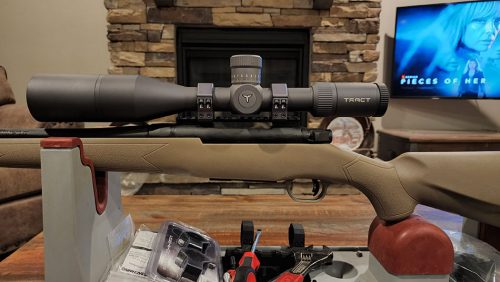
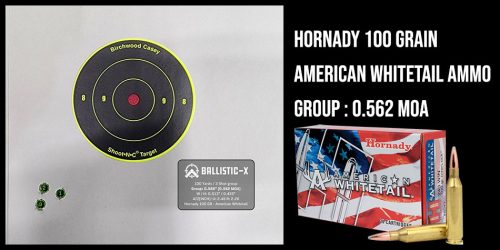
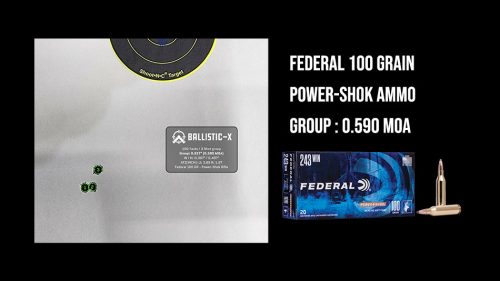
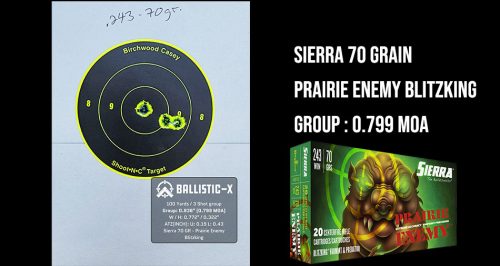
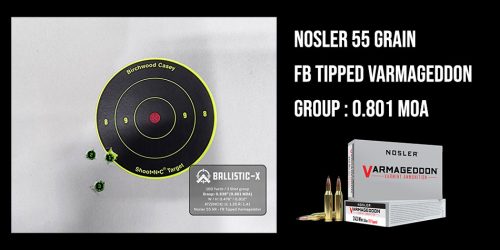
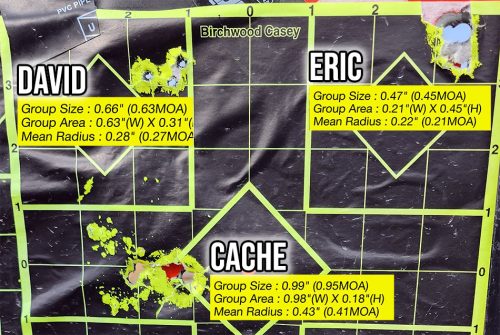
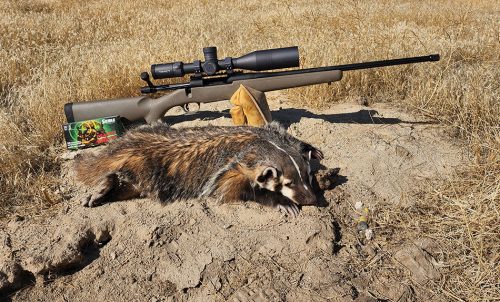
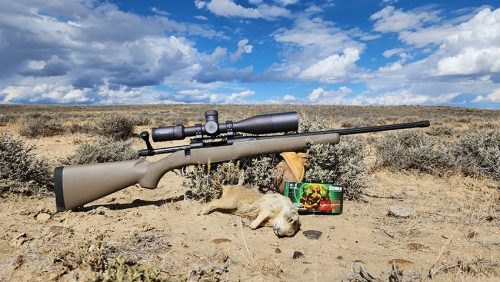
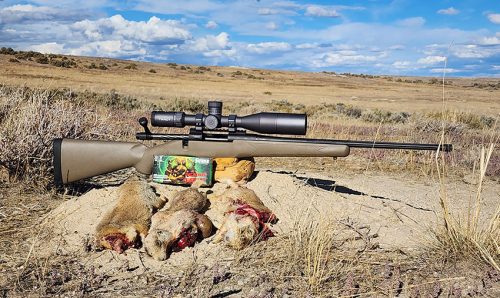
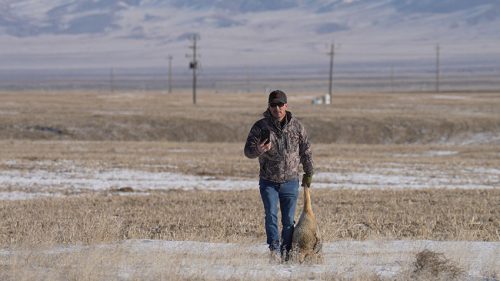
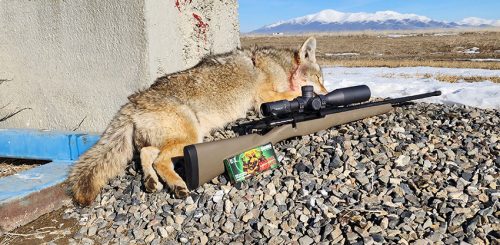
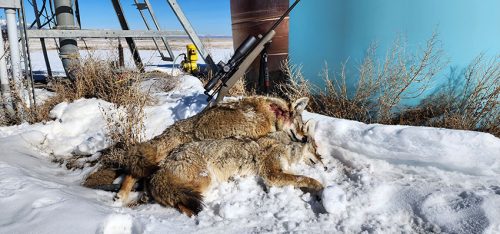
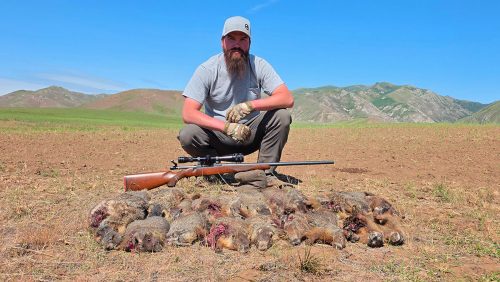
Leave a Reply
You must be logged in to post a comment